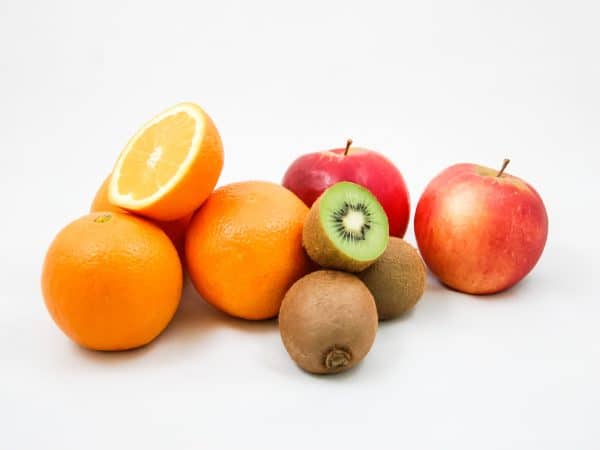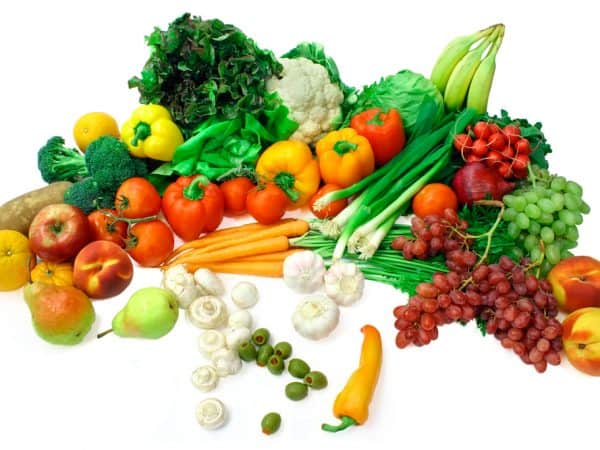What if I said you could save more than $500 a year by buying more fresh fruits and veggies?
As a registered dietitian, I’ve heard all kinds of excuses for not eating healthy, the most common being it’s too expensive. But a 2013 report by the Center for Science in the Public Interest shows how that belief doesn’t hold water. After reviewing almost 40 different popular snack and side dish items, of which half were fruits and vegetables, CSPI learned that the average price per serving of a fruit or veggie snack was significantly less that a processed snack.
Of course, 2020 prices during a global health crisis can vary, and you may see costs creep higher. But even a few cents adds up. Say you have a family of four. If everyone swaps out one processed snack and one processed side dish per day for a healthy fruit and/or veggie one, over the course of a year you can save hundreds of dollars. Iowa State University compares processed snacks for a classroom party versus healthier alternatives that still ring of celebration!
In addition, and not surprisingly, the fruits and veggie offerings have far fewer calories, less fat and less sodium/sugar than their prepacked counterparts. For example, 1 ounce of pretzels has 110 calories and 450 milligrams of sodium compared to 25 calories and 55 milligrams of sodium in 1/2 cup of baby carrots. One package of M&Ms has 240 calories, 10 grams of fat and the equivalent of 7 1/2 teaspoons of added sugar while 1/2 cup of grapes has just 30 calories, no fat, and no added sugar. Since the costs of healthy snacks are less than or similar to the cost of processed foods, why not choose the one that is better for you?
I know there are times when you just want chocolate and an apple won’t cut it. There’s no need to eliminate your favorite less-than-healthy snacks altogether. The idea is simply replace a couple of servings a day to both save money and eat more nutritiously. Healthy guidelines recommend the average person on a 2,000 calorie diet eat 2 cups a fruit and 2 1/2 cups of veggies per day, but very few of us actually do so. The results of this report can be a great motivator to help you up your intake and meet more of your nutrient needs.
While the recommendations may sound daunting it can be easy to add more fruits and vegetables to your day.
Morning
- Slice half a banana and put it in your morning cereal
- Mix 1/2 cup of berries into your yogurt
Midday
- Have 1/2 cup baby carrots with your lunchtime sandwich
- Snack on sliced peppers with hummus
Evening
- Have a veggie-filled salad before your meal
- Have 1/2 cup of roasted broccoli as a side dish
- Have a baked sweet potato as a side dish

Buying more fresh produce can still cause your grocery bill to climb if you’re not careful. Keep these tips in mind to control your spending:
- Shop seasonally. If you buy strawberries in New England in December, you’re going to pay around $4 a package. In the summer, however, that same package can be less than $2. Only buy what your family can consume before the next shopping trip.
- Do some work yourself. Sure that bag of pre-cut and washed broccoli and cauliflower looks appealing, but not for $5 for about 3 to 4 servings. You can easily buy a whole head of cauliflower and a pound of broccoli for about $3, from which you’ll get closer to 8 servings
- Check out the discount rack. If your store has a place for slightly damaged produce, take a look. Slightly bruised apples can be salvaged into yummy homemade applesauce. Bananas past their peak make delicious breads and smoothies.
- Make your own 100-calorie snack packs. Curb the calories while saving money, and you won’t send all that pretty packaging to the landfill.
Now you have no excuse for not eating your fruits and veggies.
For more Living on the Cheap stories:
Healthy school lunches kids will love
Make your own pop-tarts and convenience foods
$4 per day budget food planning
Take a bite out of road trip food costs
Make your own convenience foods


I admit that I don’t eat a lot of fruit. Some of the fresh fruits seem tasteless to me (fresh peaches and plums, which I normally like, are often not tasty and I’m allergic to strawberries). So my fresh fruit consumption is fairly limited to cherries, bananas, apples, grapes. watermelon and occasionally raspberries and blueberries. But as far as vegetables, I like tomatoes, broccoli, cauliflower, green beans, carrots, asparagus, cucumber, zucchini, and every week we have a “garbage salad” night which includes romaine and other lettuces , radishes, red onion, avocado, tomatoes, sometimes shredded red cabbage, carrots, zucchini, cucumber, as well as chopped hard-boiled eggs, chopped turkey breast, sometimes chopped cooked bacon, and whatever else I think of or have on hand that works in a salad. We also have salads with the usual meat and potato dishes.